The effect of magnetic fields on star cluster formation
Daniel J. Price and Matthew R. Bate
Submitted: Nov 2007, accepted: Jan 2008 for publication in Monthly notices of the Royal Astronomical Society.A non technical description of this work can be found on the research page. See below for movies and images.
Abstract
We examine the effect of magnetic fields on star cluster formation by performing simulations following the self-gravitating collapse of a turbulent molecular cloud to form stars in ideal MHD. The collapse of the cloud is computed for global mass-to-flux ratios of infinity, 20, 10, 5 and 3, that is using both weak and strong magnetic fields. Whilst even at very low strengths the magnetic field is able to significantly influence the star formation process, for magnetic fields with plasma beta < 1 the results are substantially different to the hydrodynamic case. In these cases we find large-scale magnetically-supported voids imprinted in the cloud structure; anisotropic turbulent motions and column density `striations' along the magnetic field lines similar to those observed in the Taurus molecular cloud and strongly suppressed accretion, leading to up to a 75% reduction in star formation efficiency and a more quiescent mode of star formation. There is also some indication that the relative formation efficiency of brown dwarfs is lower in the strongly magnetised runs due to the reduction in the importance of protostellar ejections.
[ pdf (high resolution 2.8Mb) ]
Conference Proceedings
Price, Bate & Dobbs (2008) "Magnetic fields in star formation: from galaxies to stars", submitted to proceedings of "Magnetic fields in the Universe II"This proceedings also refers to the papers (and movies) on Magnetic fields in single and binary star formation (Price & Bate 2007) and Magnetic fields and the dynamics of spiral galaxies (Dobbs & Price 2008).
[ price_cozumel.pdf (1.1Mb) ]
Movies
Movies and images are copyright (c) 2008 Daniel Price and Matthew Bate.
Use is free for non-commercial purposes provided due reference is given. Click here for a directory listing of all movies.
Calculations were performed on the UK Astrophysical Fluids Facility (UKAFF) supercomputer.
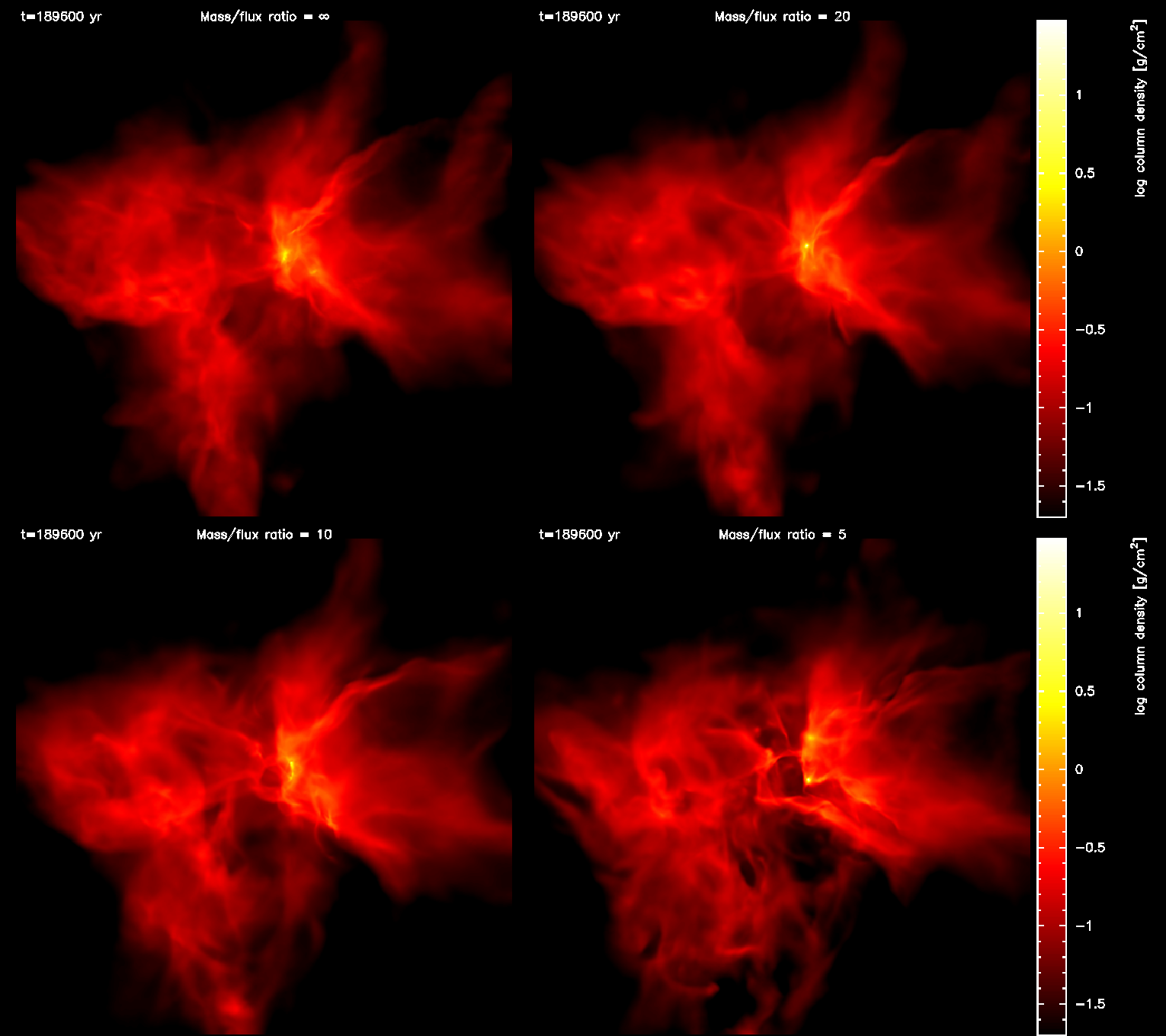
|
A sequence of four calculations of increasing magnetic field strength (left to right, top to bottom) in the same movie.
[ small (6.5Mb Quicktime) ] [ full size 125Mb Quicktime] |
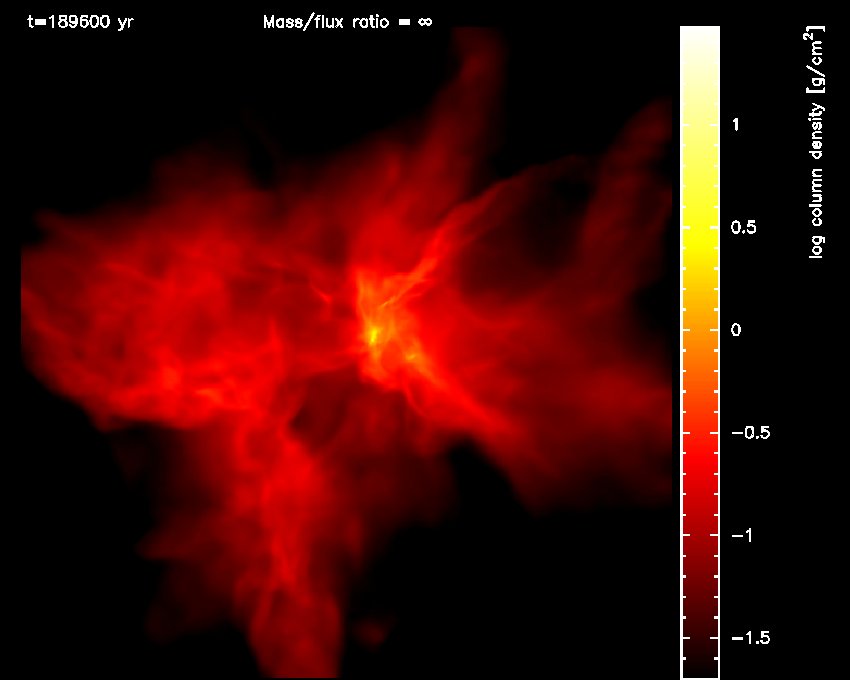
|
No magnetic fields (ie. pure hydrodynamics).
[ 6.9Mb Quicktime ] |
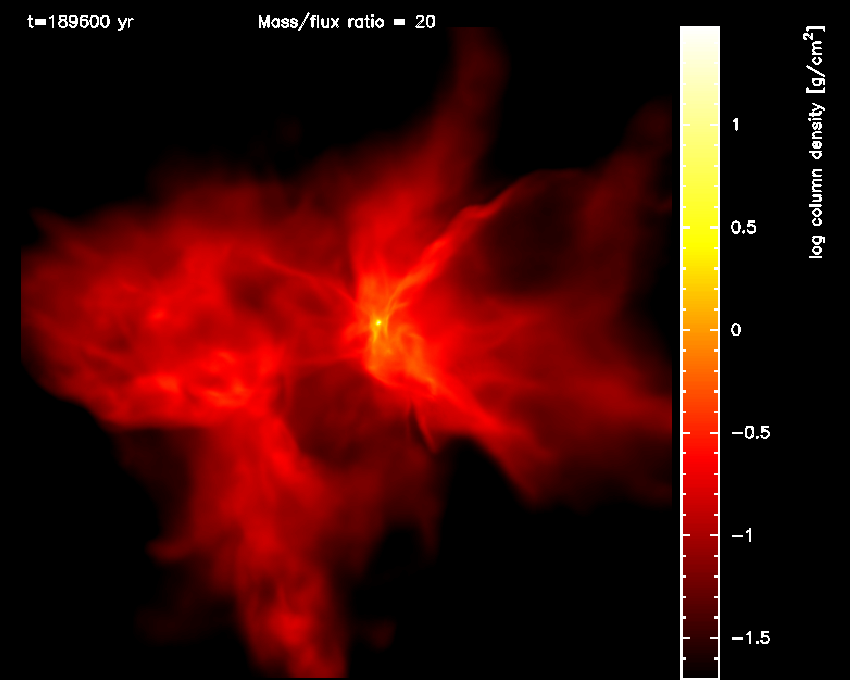
|
Very weak magnetic field (mass-to-flux ratio = 20).
[ 6.9Mb Quicktime ] |
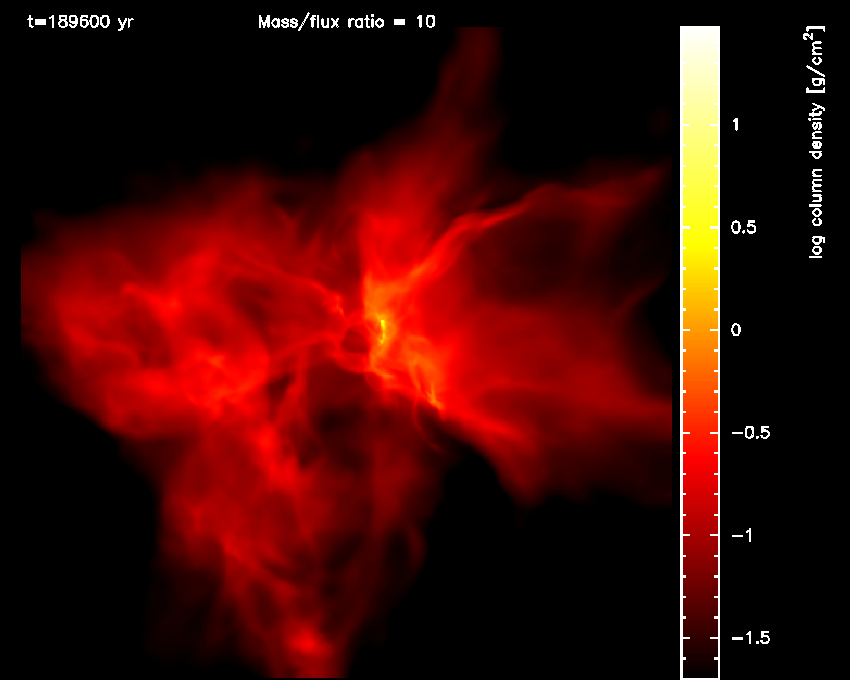
|
Weak magnetic field (mass-to-flux ratio = 10).
Already at this strength there is noticeably less star formation activity in the cloud. [ 7.1Mb Quicktime ] |
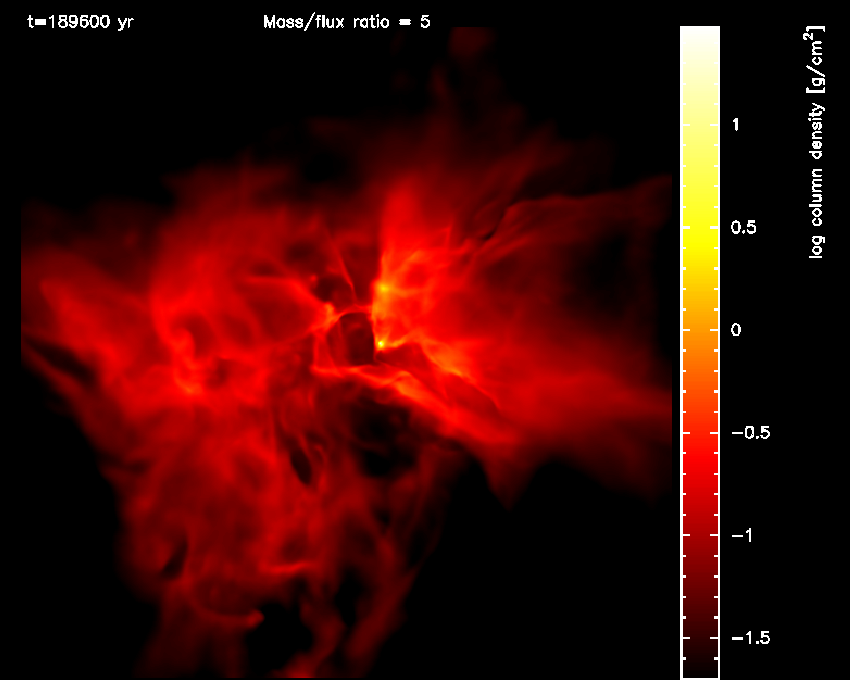
|
Moderate strength magnetic field (mass-to-flux ratio = 5).
Here the magnetic field is strong enough to dominate the gas pressure, leading to qualitatively different features such as voids in the cloud which are supported by the magnetic field. [ 7.1Mb Quicktime ] |
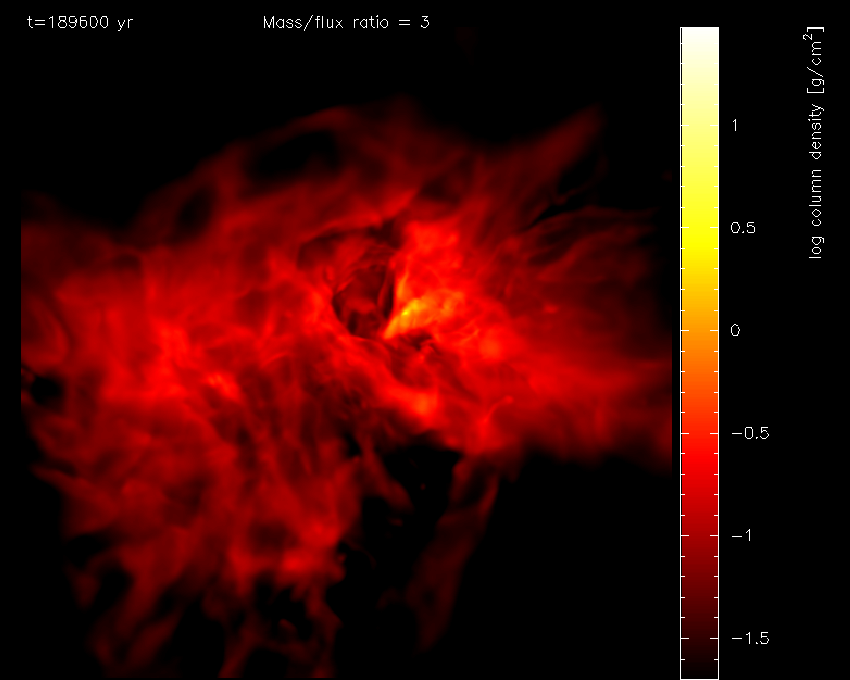
|
Strong magnetic field (mass-to-flux ratio = 3).
Note in particular the streaming motions in the vertical direction not present in the weak field runs which are produced by gas being channelled along magnetic field lines. [ 3.4Mb Quicktime ] |
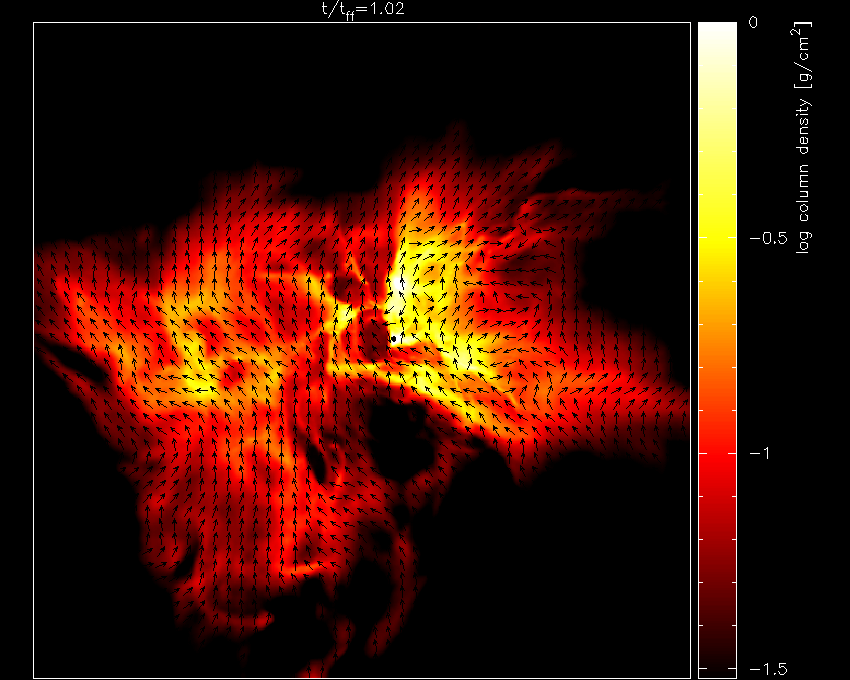
|
Magnetic field arrows and column density in the moderate field strength run (mass-to-flux = 5) (36Mb Quicktime). |
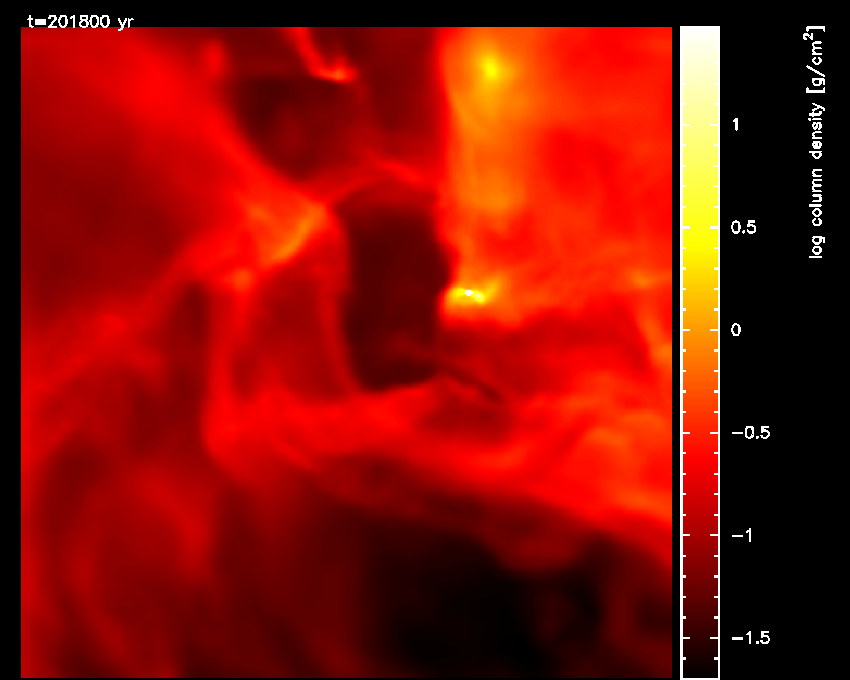
|
Zoom up of the magnetically supported void created in the moderate and strong magnetic field runs (3.3Mb Quicktime). |